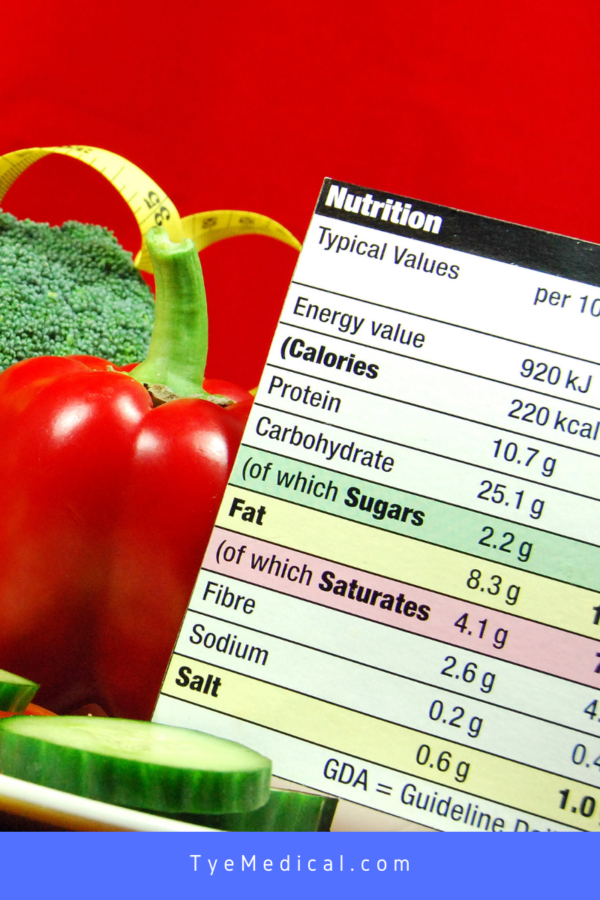Get Organized with a Caregiver Journal (Resources Included!)
Nov 16th 2020
What’s one of the top ways to reduce stress? Get organized! And this wisdom applies to caregivers as well. If you’re caring for aging parents or other loved ones, a journal might be your most effective step for getting organized and slashing stress.
Journals are effective tools, especially if you’re caring for a dementia patient with changing needs, symptoms, and treatments.
In this article, we’ve included some tips for getting started with your caregiver journal, eight important ways to use it, and some resources to help.
 Getting Started with a Caregiver Journal
Getting Started with a Caregiver Journal
First, determine the method that works best for you. Are you more comfortable with paper and pen or a digital notebook that’s available across devices?
If you like the old-fashioned approach, then build your caregiver journal using a portable binder (choose your size) and binder tabs. If you’d rather type your journal, then try digital notebook apps like Evernote or OneNote (free app downloads available.)
Second, throughout your time with your loved one, jot quick notes about general observations, problems, or needs that come up. Remember, your notes don’t have to be long – just what’s necessary.
Third, be sure to leave an empty section in the back for just writing down your thoughts, feelings, struggles, and encouragement. This outlet will also help you reduce your stress levels. (More on that next!)
How Caregiver Journals Reduce Stress
When caring for aging parents or loved ones, they rely on you for many things. Depending on your circumstances, they might depend on you for almost everything. Hopefully, you have help. But even with backup from family and professionals, there’s A LOT to remember and keep track of.
A caregiver journal helps you maintain accurate records and track important information so that when it’s time to talk with the doctor, you’re prepared. And you can rest assured knowing that you’re on top of your loved one’s health and safety. Now that alleviates stress!
For more on this topic, refer to our article, 10 Ways to Manage Caregiver Stress
8 Ways to Use Your Caregiver Journal
1. Track Symptoms and Needs
Keep a record of existing and new symptoms. Besides accurate information for the doctor, this will also help you worry less. Sometimes, you might discover that a specific symptom isn’t occurring as often as you thought. Remember to record the date, description, frequency, and severity of the problem.
It’s also important to track your loved one’s caregiving needs. As they require more help from you, write it down. When you see the list of things you must assist them with, you can more easily recognize when you need more caregiving support. If you’re not monitoring this area, you might not realize all the additional responsibilities you’ve taken on.
This information will inform key decisions, like when to bring in additional caregiving services.
2. Record Challenging Moods and Behaviors
If you’re caring for a loved one with dementia or Alzheimer’s, fluctuations in mood and behavior are common. While most of the time, these variations don’t signify anything important, if a pattern develops, it’s worth sharing with a doctor. It might indicate the progression of the illness. A caregiver journal brings these patterns to light.
Tracking mood and behavior for dementia patients can also help pinpoint triggers. Sometimes, hunger, thirst, fatigue, or other stressors trigger anger, anxiety, or hallucinations. If your journal alerts you to the connection, then you can adapt to prevent unhealthy moods or behaviors.
 3. Capture Eating Habits and Nutrition Facts
3. Capture Eating Habits and Nutrition Facts
You might notice changes in your loved one’s eating habits, especially if they suffer from dementia.
Use your journal to record the following:
- Weight
- What they eat/how much
- What they drink/how much
- Foods they especially like and dislike
- Preferred eating times
- Notes on changes in eating or drinking habits
- Notes on changes in weight
While the information will help you pinpoint patterns and changes to address, it can also alleviate concerns. Sometimes, it might seem like your loved one isn’t eating enough, but your data could show that their calorie intake is on point. Many aging parents eat smaller meals more frequently throughout the day, but they’re still consuming the recommended amount of calories.
You don’t need to track their food and nutrition indefinitely. Track their food and drink for at least a couple of weeks to get a good baseline. If you notice changes or suspect something might be a problem, start tracking again to see what, if anything, has changed.
4. Track Bathroom Habits
It’s a good idea to establish your loved one’s normal habits using your caregiver journal. Also, record information concerning accidents or other difficulties related to bathroom issues. Again, you might notice triggers that can be adjusted – like reducing excessive fluid intake or eliminating certain foods that cause reactions. When you’re also tracking their diet, it’s easier to find a link between their toilet trouble and certain food or drink.
They might not mention bathroom problems, which means you’ll have to pay extra attention to this area. Keeping track of bathroom habits will be easier if you’re already assisting them or changing incontinence products.
Certain health conditions, including dementia, affect bladder and bowel health. It’s not uncommon for them to develop incontinence for cognitive reasons.
If you’re looking for premium quality incontinence underwear for your aging parents, try our Premium Briefs paired with our leakproof Shaped Pads. This allows you to change the pad without throwing away the adult diaper, helping caregivers like you save both time and money.
 5. Journal About Medication Side Effects and Effectiveness
5. Journal About Medication Side Effects and Effectiveness
Many older adults require several prescriptions and supplements to keep them healthy. In addition to a medication and dosage schedule, consider journaling about the effect of medications.
Include important information like:
- Date new medicine started
- Date you noticed some improvement
- What improvements you noticed
- How effective the medication is after two weeks/one month
- Date side effect noticed and description of symptoms and severity
- Date side effect subsided or disappeared
Remember to include ways new medications affect your loved one’s mood or behavior.
6. Record Safety Issues
As physical and mental abilities decline, your loved ones might not realize their limitations. This happens frequently with dementia patients, as the disease also causes dizziness and confusion.
A caregiver journal can help you know when it’s time to increase safety measures or supervision.
Record safety incidents to help you determine when something is an isolated occurrence or a recurrent issue that needs to be addressed. Are most of the recent accidents related to balance? If so, you can meet the need with balance exercises (if the doctor permits), a walker, additional handrails, or more supervision.
7. Journal About General Health Concerns
In addition to new or worsening symptoms, include observations about sleep problems, falls, fatigue, pain, and incontinence. Jot down notes regarding frequency, severity, triggers, patterns, and anything unusual.
This will help you speak with the doctor about possible problems that have manifested or worsened since the last appointment. If you’ve already collected the information they need, it can help your loved one get help sooner. No need to wait longer and report back to the doctor.
8. Use a Caregiver Organizer
If you haven’t already, consider expanding your journal by creating a caregiver organizer. While a journal helps you keep track of issues and changes as they arise, a caregiver organizer serves as a resource for information you already have – things like:
- Key information (driver’s license and social security numbers, etc.)
- Document checklist
- Medication list
- Weekly medication chart
- Medical contact list
- Medical log
- Home safety checklist
- Community services list (meal programs, handyman, transportation services, etc.)
- Caregiver contacts
- Daily task log (for multiple caregivers)
- Financial/legal contacts list
- Financial planner (asset/debt list)
- And more…
Download this free Caregiver organizer template or use it as a guide for creating your digital organizer in Evernote or OneNote.
Decide if it’s best to keep it with your journal or create a separate file or binder.
Build Your Journal and Organizer Gradually
When you add more organization to your life as a caregiver, it relives more pressure than you realize. Ask a family member or friend to help you put your journal and organizer together. And don’t rush it. Give yourself some time to gather supplies or familiarize yourself with a new app. Then little-by-little, begin compiling the elements of your journal. It will benefit both you and your loved one.


